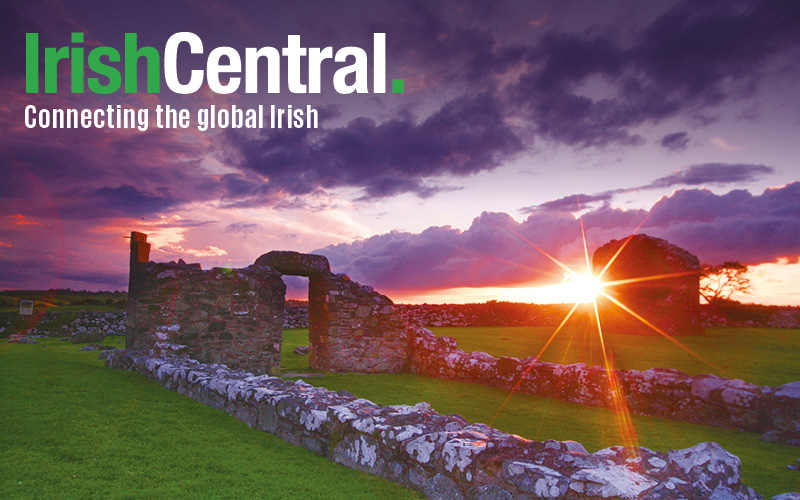Five of the 53 parishes in the Diocese of Kerry are now without a resident priest, few parishes have curates and most are "a one man show", to quote the diocese pastoral director.
Three priests who retired last year were over the age of 75 and one elderly priest has also retired this year.
With just one priest to be ordained next year, the first in a decade, the future - clerically - for the ancient diocese of Ardfert and Aghadoe, associated with early saints like Brendan the Navigator ,who is said to have discovered America in the sixth century, is not bright.
There is now just one priest under the age of 40 in the sprawling 5,300 sq km diocese, which includes parts of west and north Cork, and at least three other men are currently coping with serious illness.
As a result, a radical re-organization is taking place in Ireland's most southerly diocese to cope with the halving of its clergy in under two decades and the high possibility of a further future shortage of priests.
Parishes in Kerry that were once distinct now find themselves bonded together and the lay contribution is coming into its own, taking on more and more of the work and ministry.
Over 500 people have completed the 20-week pastoral care course in Kerry the past four years.
The parishes without priests are being served by priests from other parishes in their pastoral areas, equivalent to the old deaneries.
The need to cover for neighboring parishes means "no priest is full-time in his own parish" in these areas, the Bishop of Kerry, Dr Ray Browne said recently.
A quarter of each priest’s time is dedicated to the fourth parish that is without a resident priest, he explained, announcing that along with Valentia Island in the south west, Allihies in west Cork, and Tarbert in the extreme north—all of which have been without priests for a year or more—the parishes of Ballyheigue and Duagh were also to be without resident priests.
The changes which are sweeping across the diocese are not sudden.
Kerry's pastoral director Fr Ger Godley, who is managing the shift, notes how the Diocese began by paring back the curates and, apart from the larger Tralee and Killarney parishes, "it's just one man" and that is the parish priest, Fr Godley says.
Dingle, Killorglin, and Kenmare all have just one priest and there are currently just 51 priests for a 53 parish diocese.
Read more: When one million Irish turned out for Mass at the 1932 Eucharistic Congress (VIDEOS)
"People focus on the parishes without a priest - in fact, it impacts on the entire pastoral area," Fr Godley observes.
The lack of clergy is difficult but it is paving the way for the ideals of Vatican II and more lay involvement, Fr Godley stresses.
"It is not all doom and gloom. In fact it is quite a positive story. The emergence of lay people is fantastic. We are starting to do what should have been done in line with Vatican II, a church of the people," he said.
Ireland was "unusual", it was a church that centered on the clergy, Fr Godley continued. Over the past 100 years, the Irish church, with more priests per capita than elsewhere in the world, was a clerical church and this was unusual in world terms.
The increased lay involvement is keeping the diocese running, however. First Friday calls will still happen, funerals will continue, churches will still open but the day is not far off when it is lay ministers who will welcome the remains into the church at a funeral, for instance .
Eucharistic Ministers are already in every parish and then there are Ministers of the Word who can lead prayer. Teams to support baptism and funerals are to be trained and the exposition of the Blessed Sacrament can also be led by a lay minister, teams of which are inclusive of men and women, young and old.
The number of masses said each week is also to be adjusted.
An example of one such Kerry parish coping with the shortage is Valentia Island in the old deanery of Iveragh, which has been without a priest now for a year.
Fr Larry Kelly, parish priest of Cahersiveen, is what is known as the moderator of the five parishes of Iveragh.
The Killarney man presides over the only church in Ireland to be called after a layman,the O’Connell Memorial Church. This church was built, and named with special papal permission, after the great statesman Daniel O'Connell, a lay person, neither a saint, nor a deity, but a man who worked tirelessly for Catholic emancipation in Ireland in the 17th and 18th century.
Read more: Irish priest builds “most loving, welcoming community” in California
Fr Kelly sees lay involvement as truly liberating.
"I welcome more laity. The laity, committed laity in particular, weren't involved enough before," he said.
Losing a priest is a shock for parishioners at first, however, he admits.
"Parishes like to have a resident priest, the same way as a post office, police station and school. It's part of the fabric. When they hear first there is no resident priest, there is a shock. Always the question arises, why were we chosen?
"We've known for a long time we'd have fewer priests and needed to encourage more lay involvement."
“What is emerging now is probably less parochial in the narrow sense, and more of a sharing and a bond between the once very separate parishes,” he continued.
The four priests of the five Iveragh parishes of Cahersiveen, Valentia, Ballinskelligs, Waterville and Caherdaniel are involved in a wheel-like rota. When Fr Kelly goes to Valentia, the priest from Waterville comes to Cahersiveen, so there is "constant movement", Fr Kelly said.
Being without a resident priest for the first time in its distinguished history had been a seismic shock for the the independent-minded island of Valentia.
With two Catholic churches, one Protestant churches, numerous holy wells and sites on Valentia, the neighboring island of Skellig Michael also has a long association with Christianity. Legend has it that it is the home of the infamous druid Mogh Roith, the Servant of the Wheel, who is said to have beheaded John the Baptist.
The Church of the Immaculate Conception on Knightstown celebrated its 100th anniversary this summer. It was built to serve the highly skilled Transatlantic Cable station employees, against the wishes of the Bishop of Kerry, who refused to finance it.
There is also the Church of St. Teresa and St. Dorarca further inland in Chapeltown.
It is a small parish and like much of south Kerry has suffered a decline in population and now numbers 654.
Marie Williams is a member of the new finance committee of the parish. Marie, who had been a director of nursing, and her husband Richard, a senior civil servant, retired to Valentia from Shropshire, England, 13 years ago.
Richard is churchwarden for St John's Church of Ireland and Marie, an English Catholic "for generations", is a lynch pin of the Catholic community.
Richard thinks that what the Catholic Church is going through now has already been experienced by the Protestant Church. The Church of Ireland parish governing Valentia now stretches from Kenmare to Waterville. "Before 1922 there were a lot of Protestants here," Richard said.
Initially the loss of a priest to Valentia was "quite a shock", Marie said. But it has turned out well, partly as Fr Larry Kelly, has been "such a good moderator".
"I went from just doing the flowers on a rota in both Chapeltown and Knightstown to being very involved," Marie said of the changes wrought in the past year.
Around 20 people are involved in three core committees of pastoral finance and liturgy.
Church buildings had declined and Knightstown church particularly was "grim". Over the past year some people who hadn't been involved in the church in a while have rowed in to do up the church buildings voluntarily.
New lace and linen altar cloths for Chapeltown have been made and seats covered in green velvet in Knightstown.
"To be able to help and feel included is a very good thing … there is new energy and the happiness in the church. It is unbelievable," Marie gushes.
There is also a new social side and an after-mass gathering at the Presbytery once a month.
"On the whole people are very very happy." The fact Fr Kelly from the altar thanked people who volunteered meant a great deal too, she said.




Comments